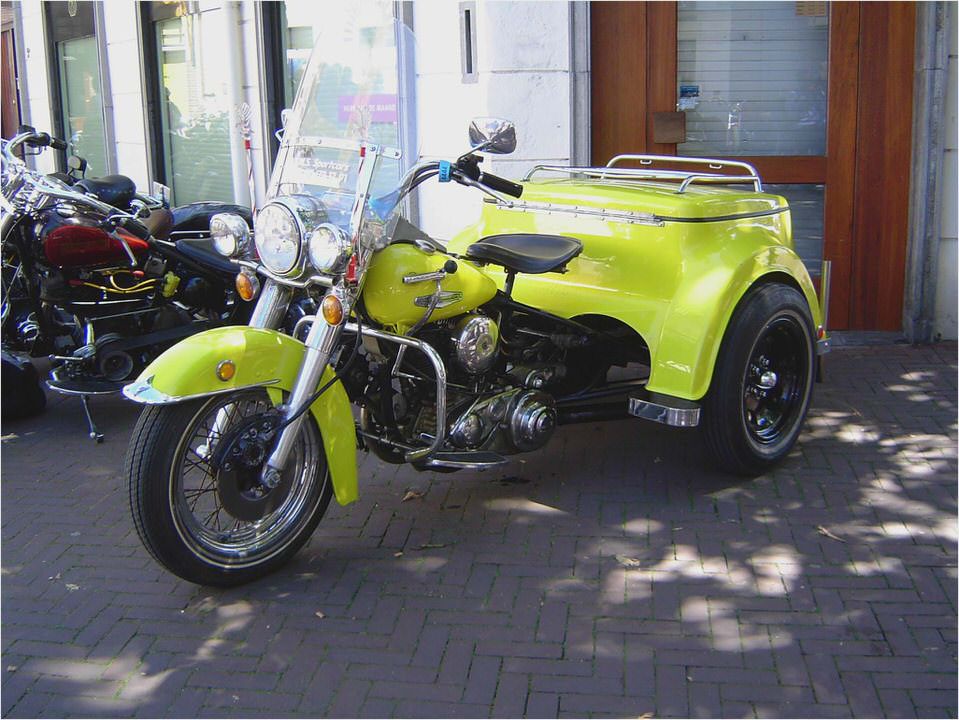
Though sales dropped sharply, during the years of the depression in the 1930s, Harley-Davidson survived. A strong dealer network, police and military use, conservative business management and strong exports were all a part of their survival.
Their servi-cars had been upgraded continuously during the 1930’s, gaining two rear brakes in 1937, an enclosed chain in ’38, and a strengthened tow-bar, which was given a permanent attachment in ’39, (eliminating the need to remove it and carry it separately in the servi-car’s trunk). Their servi-car was used widely by small businesses, the police department, the military, used car dealers and repair shops, despite some motorcycle enthusiasts feelings that the servi-car had no real practical uses and was something to be driven and not ridden.
1940 UL 1940 ULH
The servi-car got larger bodies and the rear suspension was modified to reduce body roll, cast iron brake drums replaced the stamped steel housing, and the transmission was simplified and the axle housing was improved for 1940, as well as the clutch and gearbox. The 45ci, got tubular front fork tubes in place of the old forged I beams.
1940 WL 750cc 1940 WLD 45ci Sport-Solo
Development of a military motorcycle had been underway in Milwaukee for more than a year, with prototypes of both the 61ci OHV, and the 45. Just before the German invasion of Poland, in September of 1939, two forty-fives with the model designation WLA were shipped to Fort Knox, Kentucky for testing. The forty-five weren’t as nimble or light as the flathead racers built by their competitor, but it was a durable and reliable motorcycle.
By the early 1940s the only ones remaining in the United States were Harley-Davidson and their competitor, Indian. Other than their production of motorcycles to meet military needs in World War 11, the Daytona 200 was also won again this year, with a WLDR model.
1941
1941 Knucklehead 1941 GA Servi-Car
Harley-Davidson answered the call to war again as World War 11 started. Production of civilian motorcycles was almost entirely suspended for production of military motorcycles. The service school was converted back to the Quartermasters School for the training of military mechanics, and the entire motorcycle output supplied American and Allied forces during World War 11, during which time they shipped more than 90,000 motorcycles and earned the coveted Army-Navy E for excellence in wartime production.
Their servi-car was becoming popular with commercial uses as delivery trucks. A new frame was introduced in 1941, with a stronger axle in a welded rather than riveted tube, with front brakes that fitted the 74ci, and the compression ratio was increased to 4.75:1. The servi-car grew in popularity with commercial users, with it’s ability to increase business, cut costs, and produce profits.
The box could be used for advertising as well as a carriage utility. The forty-five flathead proved to be the most durable and reliable motor in their production. It was the economical equivalent to trucks for light delivery service, and to pick up and return parts for many small businesses.
Even though the war going on overseas, Harley-Davidson didn’t ignore the voice of the public, and the their racing fans for bigger and better. They produced a 74ci OHV V-Twin for 1941, which they designated the FL. The FL premiered with a rated 48 horsepower at 5,000 rpm, with a top speed of 95 miles per hour.
The Knucklehead’s high speed was popular motorcycle among the police departments, as well as other motorcycle enthusiasts. With the cal for more power, the Knucklehead seventy-fours, which were offered this year got new larger, crankpins increased in diameter, heavier flywheels an the rocker arms were redesigned to improve top end lubrication.
The new crankcases for the 61ci and the 74ci ohv didn’t have the baffles the previous models had to equalize the lubrication to the cylinders, solving some of the problems with excessive crankcase pressure, which helped to produce more horsepower. The Cat’s Eye design stayed as the speedometer console design, with a chrome band serving as part of the tank and logo design on both sides of the fuel tank.
Larger intake ports, a redesigned manifold and a new carburetor also helped to increase it’s horsepower. The OHV Knucklehead remained in production and was testing continued in spite of the demand for production for the military, and stayed in production until 1948, proving the basis for the Panhead, Shovelhead, and even the newer Evolution engines to come in later years.
1941 EL 1941 FL
These 74ci 1200cc OHV twins designated as the F and FL model, the FL being higher compression. Letter designation was added in following years to represent different styles, engine types, and other features that were added. The colors options were still available with Clipper Blue, Cruiser Green, Black, Light Red, and Olive Green. Tire sizes changed to 5.00 x 16 inch adding to a more comfortable ride, and a new Vane-type oil pump helped to ensure the overall comfort of the engine.
Cruiser Green replaced Squadron Gray for color options, but with the need of production of military motorcycles to be built in support of the war effort, color options became limited, and less available. The first year of the rocket-fin muffler was featured this year, and the deluxe model came with a chrome package which consisted of chrome rims and chrome instrument panel.
Along with a change to a 1/2 inch longer intake manifold, the heavier flywheel of the 74ci OHV was now shared with the 61ci E series as well as the clutch upgrades that were applied to the 74s. Only 2,500 of the new 74ci FL’s were built. The rocket-fin muffler that replaced the fish tail muffler, were much quieter. The rocket-fin muffler got the nick name of the silencer, (muffler).
The tail – light housings were now painted black rather than the bodywork color.
Reduction of orders for military bikes came, sp the company started converting to civilian production. Most of the 88,000 motorcycles built for the war effort were WL 45s.
1941 WLD 45ci 1941 WLDR 45ci
The military testing brought improvements to the forty-fives which continued as the workhorse for the military. The improvements were also applied to the civilian forty-five models. The aluminum-head WLDR got a larger crankpin, became more sportier, hot beefed up cams, stronger valve springs, and a bigger carburetor, producing around 35 horsepower, while the iron-head WL became the economy model with a reduced compression ratio of 4.74:1.
A factory racing version appeared this year, as well as the WR, (flat track), and the WRTT road racing-scrambler model, which both had flat valve lifters instead of rollers for higher rpms. The WLDR was rated at 7 more horsepower than the WLD, and the forty-fives got stronger clutches, transmission, and rear brake this year. Because of the war production effort, Class C racing was set back as more of a non-priority in production and the WLDR model was discontinued during the summer, as the U.S. entered the war.
1941 UL 74ci 1941 ULH 80ci
Because of the war, no changes were made to the motorcycles from 1941 to 1946, and the models were basically produced with the improvements from 1940, and previous years. The aluminum heads were optional on the 74ci UL, and standard on the 80ci ULH. 16 inch wheels were now standard, with 18 inch wheels becoming optional, with an option of chromes rims, at $2.50. Speedster handlebars remained optional, as in previous years, with the Buckhorn handlebars remaining standard.
The tail-light assembly housing was changed to black instead of the same color as the rest of the motorcycles color scheme, and a longer rocket-fin silencer replaced the previous fishtail muffler. The rocket-fin was a quieter muffler without the steel wool packing which eventually burned out.
1941 was the last year for the 80ci flathead.
1942
1942 WLA 45ci Army
The Army ordered 745 WLA’s in March of 1940, and by 1941, most of Harley-Davidson’s production was devoted to the military. The WLA, accounted for the vast majority of Harley-Davidson’s wartime production. Engaged on priority war work, Harley had the authority to produce all the aluminum, rubber, and steel it needed to produce motorcycles.
Yet there was still some shortages, and the Army requested that all unnecessary rubber be left off the WLA’s, as there was a rubber shortage. So rubber footrests and kick-starter pedals were left without the rubber. Chrome was also left off, which complied with the military’s request for less weight. The rear tail-lights were blacked out on many of the military motorcycles, during the war, to prevent being seen by the opposing forces.
The British were making do with 350/500cc singles, and the British officials tried to get William Harley to make the smaller 30ci twin, (of which the British were quit persistent about), but, Bill refused, and the Army was later convinced that the 45ci was just what they needed. It’s fuel consumption was 35-37mpg, (13ltr/km), and being a larger engine, it was nicely under-stressed.
The WLA’s were supplied on cost to the government during the war effort, on a cost-plus 10 per cent basis, so there was very little profit margin. Still, they stayed in business, and additional Flatheads were made for spares to meet the demand for their motorcycles for the wartime effort.
1942 WL 1942 WLC
There were two variations on the WL theme. WLC was for the Canadian forces (as Canada had been in the war since 1939) and, although mechanically similar to the WLA, it differed in several ways. It used the big twin’s forks and front brake, transposed the clutch and front brake levers and had a foot gear change. It didn’t have the WLA’s rear luggage rack (designed for a 40lb/18kg radio) but countered with a toolbox on the front mudguard.
The WLC formed a substantial part of Harley’s wartime effort, as twenty thousand of them were built. The tubular type luggage rack, was replaced by a heavier duty square section to carry a radio and a fork fitted front scabbard to carry.
1942 WLA – 45ci 750cc Army
S pecifications: 1942 WLA; Engine, Side valve 45-degree V-Twin. Bore Stroke, 2 (3/4 x 3 13/16in), (69.9 x 107.4mm). Capacity, 45.12ci (750cc). Compression Ratio, 5.0:1. Power . 23.5hp @ 4,600rpm.
Torque, 28lb ft @ 3,000rpm. Gearbox, Three-speed, constant mesh, hand change. Gear Ratios, 1st: 11.71:1 2nd: 7.45:1 3rd: 4,74:1. Clutch, Dry, single plate. Primary Drive, Duplex Chain.
Final Drive, Chain. Suspension, (Front), Leading-link spring forks. Rear, None. Wheels/Tires, (Standard), 4.00 x 18in. (Desert), 5.50 x 18in. Wheelbase, 57 (1/2in).(146cm). Seat Height, 32in. (81cm).
Weight, 576ib (261kg). Ground Clearance, 4in. (102cm). Fuel Capacity, 3 (3/8) gallons. (16litres). Fuel Consumption, 37mpg. (13ltr/km) est. Cruising Range , 125 miles. (200km) est.
Maximum Gradient, 30%. Top Speed, 65mph. (105km/h).
The 2 (3/4) x 3 (13/16) bore and stroke engine was made of tuff stuff, and was the lowest compression version available. With enlarged cooling fins to enable it to cope with first-gear slogs across country. Eighteen inch wheels and big D-section mudguards help prevent mud clogging off-road, and there was a substantial skid-plate to protect the engine and gearbox.
A big oil-bath air cleaner was added, along with a heavy duty luggage rack, ammo boxes and rifle scabbard.
Harley Davidson built more than 88,000 of these motorcycles during World War 11, (and supplied enough spare parts to assemble still another 30,000). Reports of the 45-inch WLA surviving high-speed crashes, parachute drops, artillery fire, desert heat, and winter snows with primitive, if any maintenance is legend. The WlA became a useful vehicle for scout duty, dispatch work, communications, and traffic control, military police duties, as well as a supporting force for armored divisions.
The Army still wanted a shaft-drive flat twin as its standardized military motorcycle, so they produced a motorcycle, with horizontally opposed cylinders, which had a drive shaft, designed for desert use, designated the XA. The XA was a 750cc side-valve flat twin. The Army testers loved it.
It featured a foot-shift 4 speed transmission, was shaft driven, had a hand clutch, a lengthened WLA fork, a high clearance flat fender, designed to keep mud from building up around the front wheels, and a plunger rear suspension. The XA 750, ran cooler than the WLA and had what they considered a less messy chain drive and went further between overhauls. However, it used additional aluminum.
1942 XA 750 – Horizontally Opposed Twin
The Army ordered 1.000 of these for military use at around $870 each. The WLA and XA were both produced for the Army, but the XA was discontinued, as it was decided that the WLA could do the same job at a considerable less expensive, and the WLA was 45ci flathead with a top speed of 65 mph. The Army Jeep, came along shortly after, which took over the role of the XA’s. The WLA and XA were both produced for the Army, Only 1,011 XA’s were built.
One of the advantages of the opposed twin engine was having the cylinders more in the air-stream for cooler running temperatures. The XA had a compression ratio of 5.7:1, with 23 horsepower at 4,600 rpm, a 3.125 x 3.125 inch bore and stroke, 23 horsepower at 4,600 rpm, a gear primary drive, 4 speed transmission, 6 volt battery, 58.75in wheelbase, weighted 538lbs, with a fuel capacity of 4.1 gallons. It’s top speed was 65 mph, and had an oil capacity of 2 quarts, and 4 x 18 inch tires.
The XA, was the only shaft-driven motorcycle that Harley-Davidson had produced.
Walter Davidson, company president dies at the age of sixty-five in 1942, leaving only William Harley and Arthur Davidson, left of the original four founding fathers of the Harley-Davidson Company
The Harley-Davidson’s civilian service training center was changed to the Quartermaster School for teaching military mechanics, maintenance, and repair of the WLA forty-five as a priority in 1942.
1943
1943 WLA – 45ci 750cc – Army
In 1943, Harley-Davidson received the first of it’s four Army-Navy E Awards for excellence in wartime production. Many American servicemen got their first exposure to Harley-Davidson motorcycles overseas, and many of the GI’s found their riding experience to be one of their more pleasant wartime memories, and went on to buy a big twin for themselves in their civilian lives.
For years afterwards, all over the world, brand new WLA’s, their engines, and bits and pieces, went on sale at rock bottom prices as their wasn’t any compensation for the massive overstocks left behind after the war ended. This helped to bring thousands into Harley-Davidson ownership, and also expanded Harley-Davidson’s influence in Europe. The 80ci, 1340cc twins were the bosses of the highway until the overhead valve 74 cubic inch superseded them with the 1200cc FL series.
The 45ci, 750cc became the longest running flathead in Harley Davidson history.
1943 Army-Navy E Ceremony-Milwaukee William Harley
In September of 1943, Bill Harley, suffered a fatal heart attack, leaving Arthur Davidson as the last of the original four founders. Arthur lived to see the end of the second World War.
1944
1944 WL 1944 WLD
The WL series remained in production after the war and saw years of service trough it’s use in their servi-car. The WR racing engine got more compression, hotter cams, and a roller bearing crankshaft. Production based on racing became quite popular in the US during the late forties.
With almost the entire Harley-Davidson production being devoted to production for military use, close to 90,000 WLA army-version motorcycles had been built and shipped from 1941 to 1945.
1945 WLD
With World War 11 ending, conversion back to production of civilian motorcycles resumed in November of 1945. With the conversion to civilian production and reductions in government orders for military bikes, and the post-war demand for motorcycles being high, the focus was back to the Big Twins. Surplus war models were sold in large lots at increased discounts. There was a reduction in production in 1945 of the FL series Knucklehead as well as other civilian models.
Less than 1000 FL models were produced. Wartime material shortages were still being seen as well as few color options for the civilian motorcycles. Gray and Red were basically the only color options available, until Black and Sky Blue were offered again in 1946, for their first year of full scale civilian production. Les than 2000 OHV models were produced during the war, with their main production being flatheads for the military, though testing and development continued.
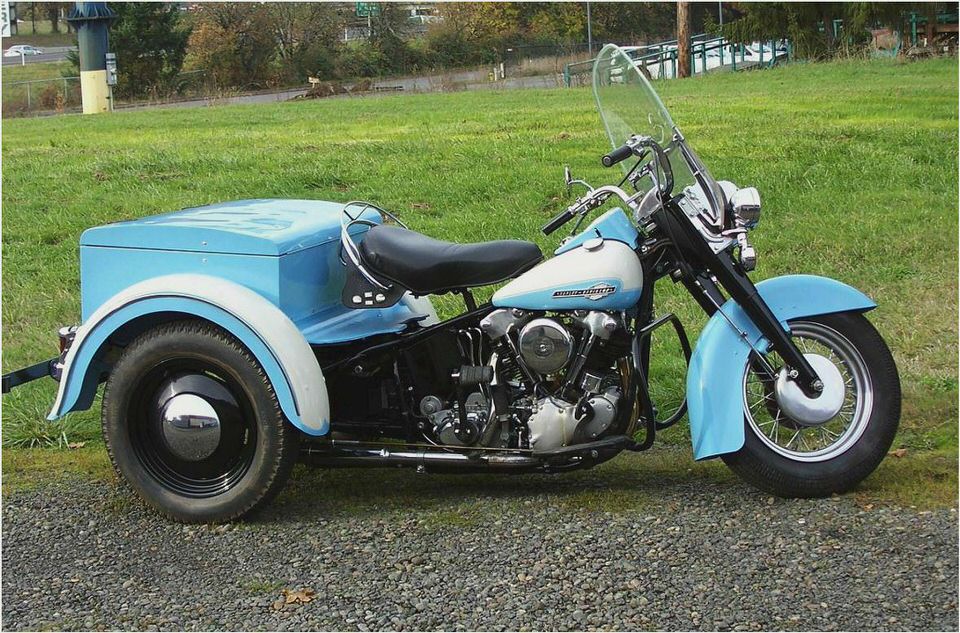
Work on the first hydraulic telescopic front fork was underway, which a prototype was fitted to a Knucklehead in 1945.
1946
1946 WL 45ci – 750cc Flathead
The first showing of hydraulic dampening for the front wheels was seen on the Big-Twins in 1946, with the application of a Monroe shock absorber joined at the front fork springs which replaced a Ride-Control friction device. The Knucklehead was on it’s way to history by 1946 and 1946 was the first year for full scale civilian production since the war ended.
1946 was also the last year for the Cat’s Eye instrument panel. The speedometer face was two-tone instead of silver with the numbers matching the color of the inner circle in a design known as the airplane style speedometer. The three color combinations that were offered this year were green/cream, gray/white, and black/silver, for face-covers. There was still a post wartime material shortage, and Black and Skyway blue didn’t became available again as color options until the year progressed.
This would also be the last year of the streamlined tail-light. Stainless steel trim, chrome tank badges, chromed shift levers, gates, gas caps, and headlight lamps were added again later in the year as production of civilian models got underway again and the early model nameplates were painted.
1946 F 1946 FL
With the continued testing and development of the OHV’s, Harley-Davidson realized that riders would be wanting oil-tighter, and smoother engines, motorcycles that were more reliable, transmissions that shifted more conveniently, with easier starting. The shifting of gears was still done by a shift lever which required the rider to take his hand off the handlebars to shift the gears. These were all projects for improvement of the company’s up-coming models.
There were more saddlebag options with the post-war production, though some of the seat options were still limited. A rear-view mirror was added with the special solo group, along with a trip odometer, safety-guards, and a sheepskin set cover. The hinged rear fender, making tire changing easier stayed as part of their production for several more years.
1946 OHV Knuckleheads
The post war peacetime production brought the racing market back in focus. The company introduced a 45ci-750cc flathead WR model which proved to be one of the best racing motorcycles built. Attention was given to getting more horsepower from the WR and getting rear suspension, more effective brakes, and foot-shifting to the racing circuit.
The Daytona 200, as the traditional season’s opener, didn’t resume until the following year.
1947
1947 FL 1947 WLD
Several Revisions came with the resuming of full civilian production in 1947. The fuel tank was changed to fit a new instrument panel, the new speedometer face now had a two-toned black and white background with italicized numbers with a red pointer needle. The fuel tank was redesigned to fit a new instrument panel, and separate oil and generator lights were arraigned together in a small rectangular housing with single lens, situated in the center of the tank.
Four color options were offered in 1947, Flight Red, Cruiser Green, Skyway Blue, and Brilliant Black.
In 1947 a new plant was purchased on Capitol Drive in Milwaukee which was formerly the A. O. Smith Propeller Plant, created during the war, shipping of new parts to Juneau Avenue for final assembly, and full civilian production resumed with updates of the ’41 models. Chrome and other accessories were added again for the civilian market, a zippered black leather ridding jacket was added to their clothing catalog, becoming the first Classic black leather motorcycle jacket, and the Deluxe Buddy Seat, which was discontinued during the war returned for civilian use.
Close to 1200 Knuckleheads were made for 1947, for it’s twelve-year run winning a loyal following from motorcycle riders and becoming an icon for The Harley-Davidson Motorcycle Company. The racing circuit was still a part of Harley Davidson’s interest in 1947. Harley-Davidson racers captured the National TT, National Miniature TT and Nationals at Richmond, Springfield and Milwaukee, and dirt track racer, Jimmy Chann, wins the first of Three consecutive AMA Grand National Championships this year.
1948
The Panhead
In 1948, Harley-Davidson started the year of with several brand new motorcycles, and several new engines. Overhead valves, aluminum heads, hydraulic lifters, better combustion, and newer improved lubrication were the new features to both the 61ci and 74ci twins this year. The newer model OHV twin’s, became known as the Panhead because of the pan-like chromed rocker covers.
The 1948 FL model came with a 45 degree 73.73 cubic inch displacement, 3.44 x 4 inch bore and stroke, and a 7:1 compression ratio with 50 horsepower at 4,800 rpm’s, a 4-speed transmission, front and rear drum brakes, coil/points ignition, chain primary and final drive, hydraulic valve lifters, a new oil pump, a strengthened steel double down-tube frame. The frame was stretched to accommodate the new taller engine which became known as the wishbone frame because of it’s bowed front down-tubes.
The new frame came with a mounting plate for crash-bars, and a steering lock. The new engine for this year carried it’s oil inside and was lighter. The Panhead’s new hydraulic lifters, solved some of the previous models the problems of cooler running and maintaining more exact valve adjustment.
The Panhead’s new oil pump did a better and more thorough job of getting oil to the needed parts of the engine. The Fl came with leading-link spring/fork suspension, a fuel capacity of 3.75 gallons, a 1 gallon oil capacity, and had a top speed of 100 miles per hour. The new pan-shaped valve covers kept more oil inside the engine, with the aluminum heads reducing operating temperatures.
The FL’s total weight was 565 lbs with a 59.5 inch wheel base. The cases were modified for for the new cylinders, and a new camshaft was designed for the new valve system. Otherwise, the engine’s bottom end was basically unchanged. Another change for 1948 was a reversed gear shift mechanism which put the first gear at the rear, and the fourth gear, the front, and steel inserts for 14mm spark plugs. Flight Red, Azule Blue, and Black were the FL’s color options for the year, and sold for $650.00.
Close to 13,000 Panheads were produced for in their first year of production as both E and F models, with 8,071 FL’s.
1948 FL 1948 FL
Also debuting this year was a new lightweight two stroke 7.6 cubic inch single, the 125 S model. The new 125 S model came with a 2.06 x 2.2 inch bore and stroke, had 3 horsepower, a three-speed transmission, chain primary and final drive, a 6 volt battery, steel double-tube frame, weighted 185lbs, with a wheelbase of 50 inches, a fuel capacity of 1.7 gallons, 3.25 x 19 inch tires, with a top speed of 50 miles per hour. The 125cc model S was considered an economical means of transportation.
The 125 S’s design came from Germany’s DKW manufacturing rights which were acquired after the war. This new lightweight 125cc two-stroke single, which came to be known as The Hummer, sold for $325.00, of which 10,117 were built.
1948 125 S 1948 WR
Sidecars, were still considered practical. The new addition of their new manufacturing plant in Milwaukee was used for their productions of engines and transmissions, and production numbers started to rise again this year. 1948 was also the last year for the girder/springer front fork, until it’s re-appearance many years later, where it was re-instated on newer models.
In 1948, Harley-Davidson won 19 of the 23 National events held, including a dominant performance at Daytona in which seven of the top 10 that finished rode Harley Davidson. Production for 1948, was 31,163 motorcycles.
1949
1949 Hydra-Glide
Along with with a more compliant suspension, deeper skirted one piece seamless fenders were a new addition for 1949. The hydraulic front forks appeared on the new Hydra-Glide models, (an FL with telescopic fork and deeply vanished fenders). The hydraulic spring tubes gave the motorcycle a smoother ride and a more stylish look. The hydraulic telescopic frnt forld replaced the girder/springer forks until they
Harley-Davidson won 19 out of 24 National Races in 1949
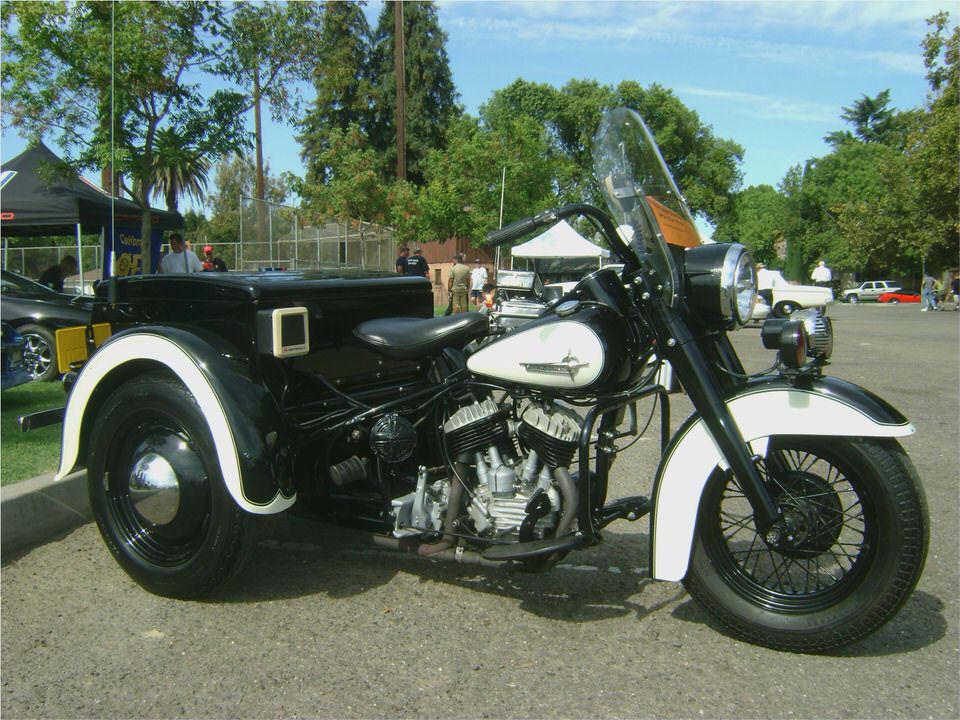
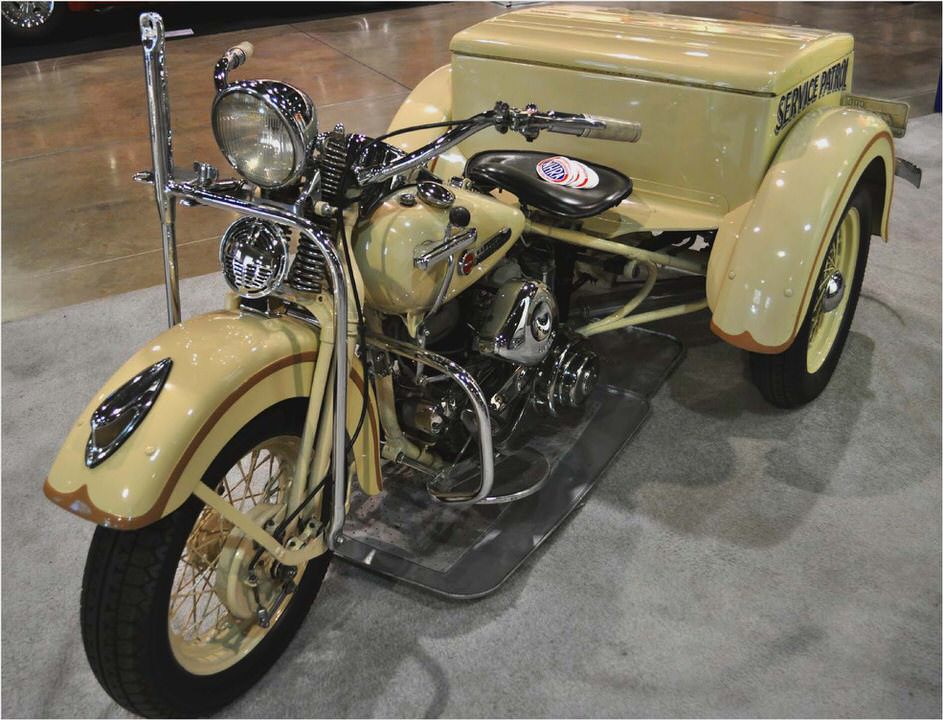


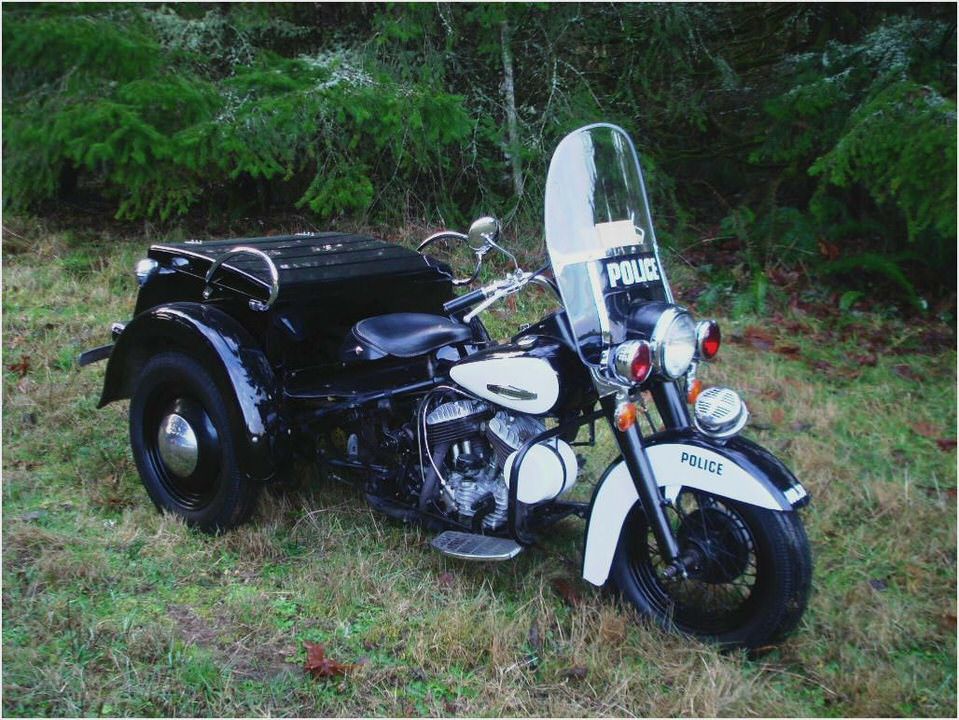
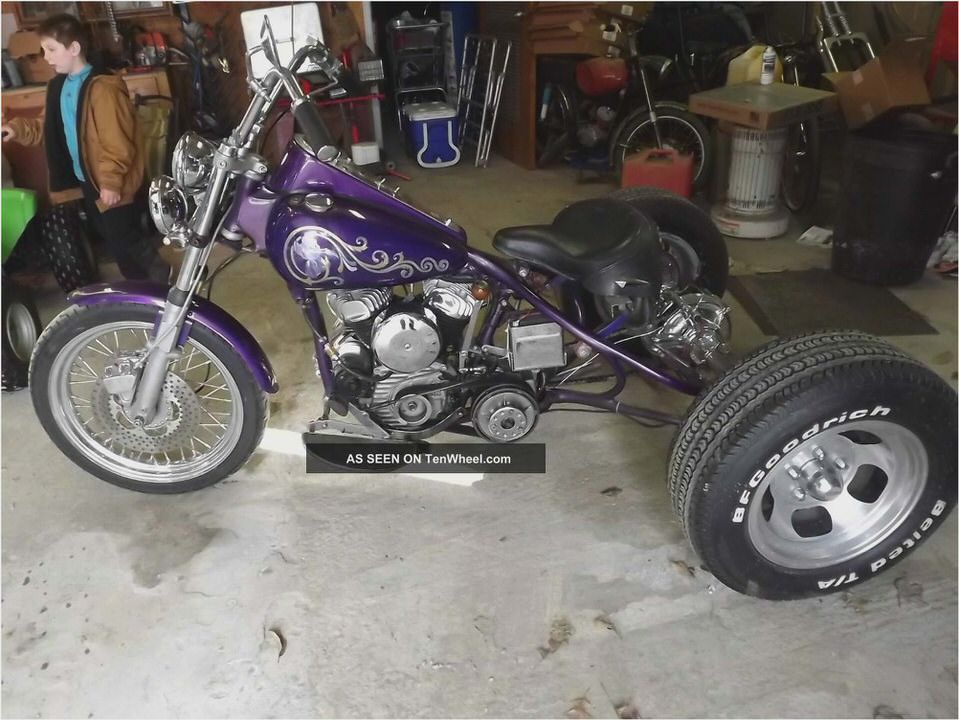
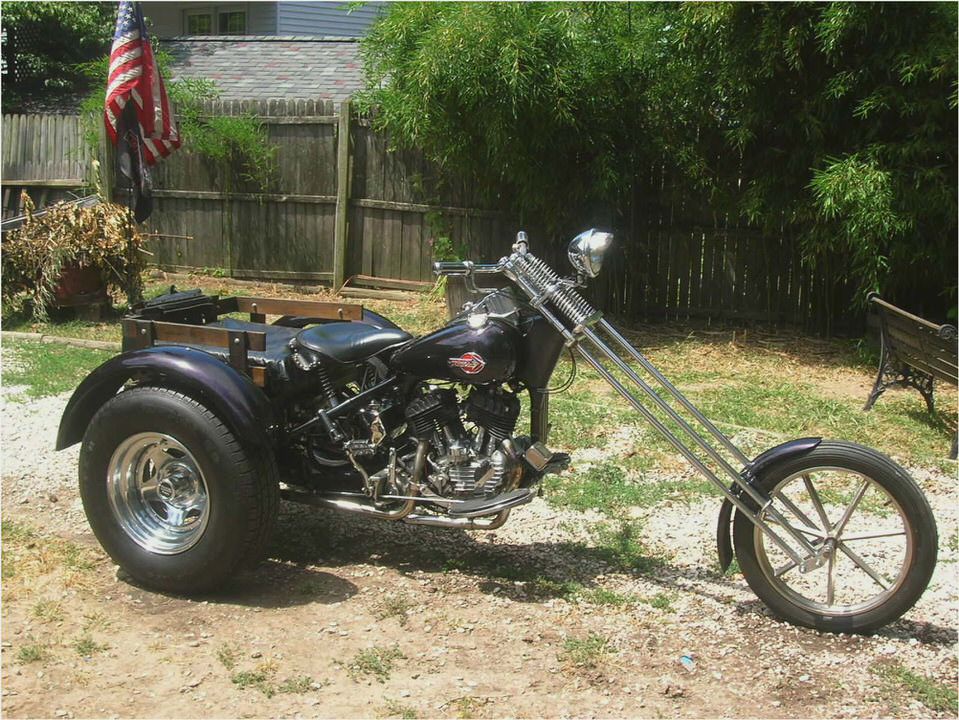
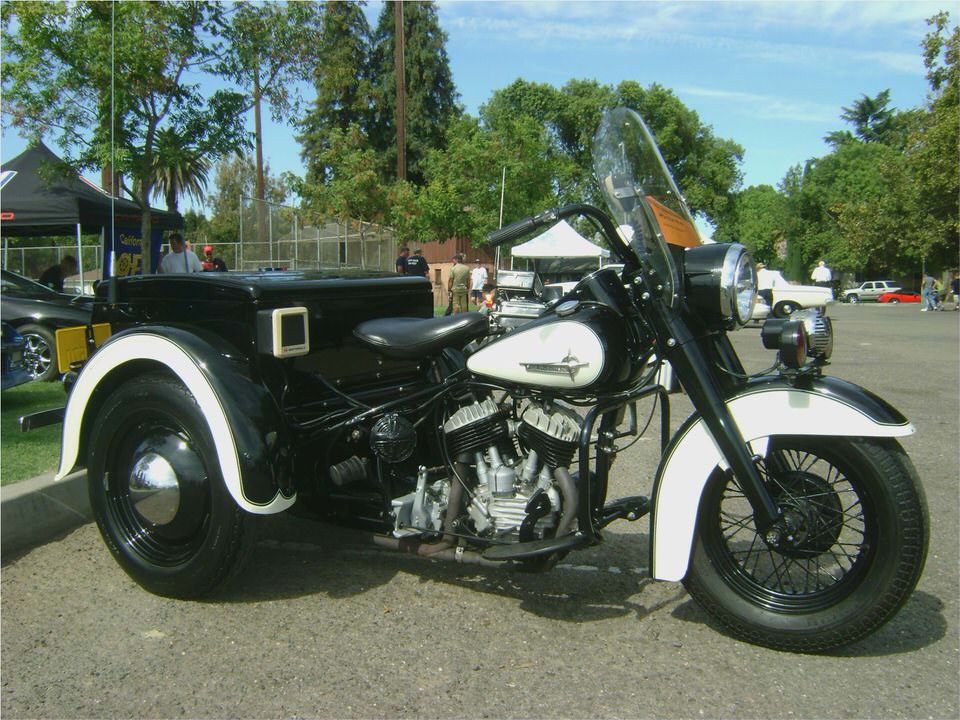
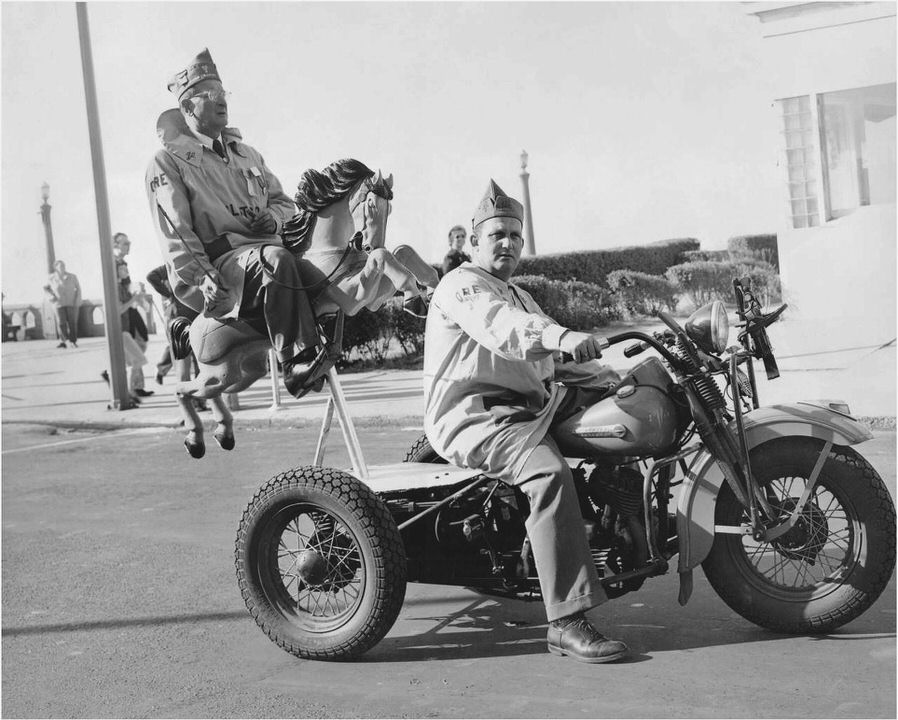
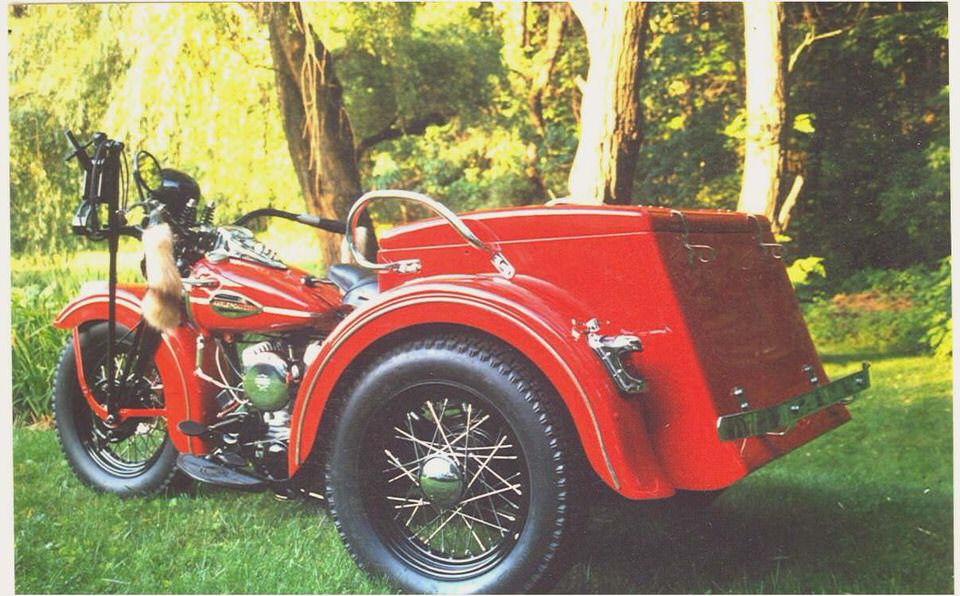
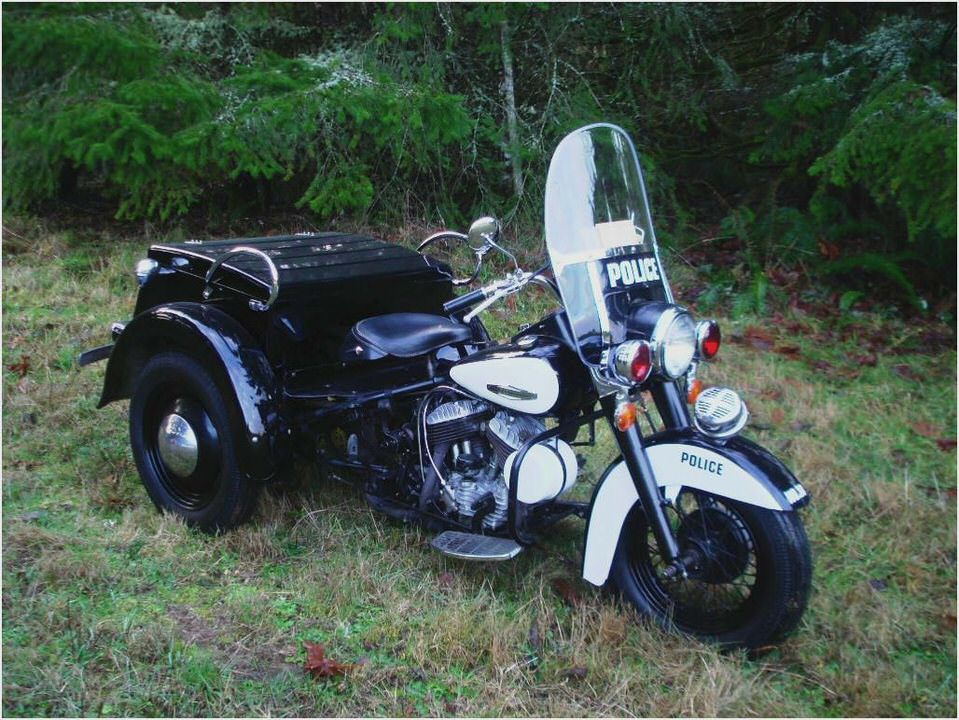
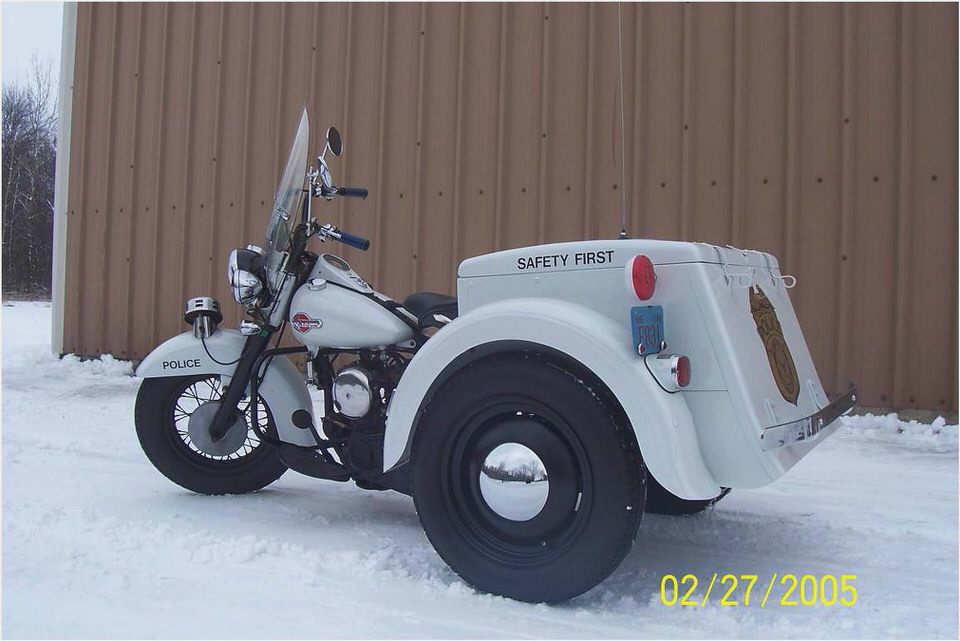
- 2009 Harley-Davidson XR1200 motorcycle review @ Top Speed
- Harley Nostalgia. Harley Davidson Flhp-road King Police Harry: Harley Davidson.
- 2006 Harley Davidson VRSCR Street Rod
- Riding Impression: 2010 Harley-Davidson CVO Softail Convertible: A factory…
- 2012 Harley-Davidson Dyna Glide Super Glide Custom – Used 2012 Dyna Glide…

